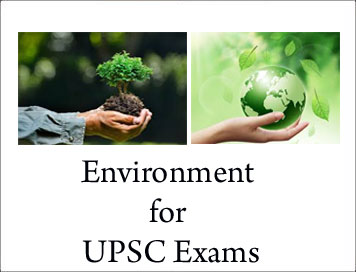(HOT) UPSC Current Affairs 2025 PDF
NEW! The Gist (NOV-2025) | E-BOOKS
Clear the air for children: UNICEF : Environment for UPSC Exams
Clear the air for children: UNICEF : Environment for UPSC Exams
- This report looks at how children, particularly the most disadvantaged, are affected by air pollution.
-
It points out that around 300 million children live in areas where the air is toxic – exceeding international limits by at least six times – and that children are uniquely vulnerable to air pollution, breathing faster than adults on average and taking in more air relative to their body weight.
-
The report also notes that air pollution is a major contributing factor in the deaths of around 600,000 children under age 5 every year and threatens the health, lives and futures of millions more.
-
It uses satellite imagery to show for the first time how many children are exposed to outdoor pollution that exceeds global guidelines set by the World Health Organization (WHO), and where they live across the globe.
-
The report says “Pollutants don’t only harm children’s developing lungs – they can actually cross the blood-brain barrier and permanently damage their developing brains – and, thus, their futures. No society can afford to ignore air pollution”.
-
The satellite imagery confirms that around 2 billion children live in areas where outdoor air pollution, caused by factors such as vehicle emissions, heavy use of fossil fuels, dust and burning of waste, exceeds minimum air quality guidelines set by the World Health Organization.
-
South Asia has the largest number of children living in these areas, at 620 million, with Africa following at 520 million children.
-
The East Asia and Pacific region has 450 million children living in areas that exceed guideline limits.
-
The study also examines the heavy toll of indoor pollution, commonly caused by use of fuels like coal and wood for cooking and heating, which mostly affects children in low-income, rural areas.
-
Together, outdoor and indoor air pollution are directly linked to pneumonia and other respiratory diseases that account for almost one in 10 under-five deaths, making air pollution one of the leading dangers to children's health.
-
Children are more susceptible than adults to both indoor and outdoor air pollution as their lungs, brains and immune systems are still developing and their respiratory tracts are more permeable. Young children also breathe faster than adults, and take in more air relative to their body weight.

